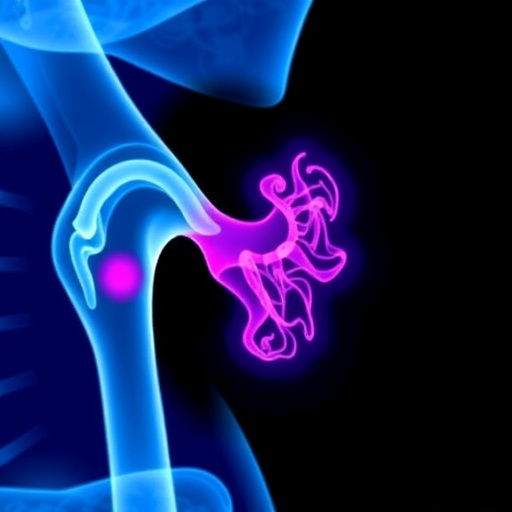
In the evolving landscape of pediatric oncology, imaging biomarkers have surfaced as pivotal tools in the diagnosis and management of childhood cancers. A compelling new white paper authored by Nievelstein, Borgwardt, Inarejos Clemente, and their colleagues delves into the current state of these biomarkers, providing a comprehensive overview that is not just timely but also crucial for advancing pediatric patient care. The white paper emphasizes how imaging biomarkers are revolutionizing the way medical professionals view and interpret pediatric tumors, highlighting technological advancements and gaps in knowledge that must be bridged.
Imaging biomarkers, particularly in the realm of oncology, are quantitative measures derived from medical imaging studies that reflect disease presence and severity. They are crucial in predicting treatment responses, assessing prognosis, and monitoring disease progression or relapse. The white paper underscores the importance of standardizing imaging protocols to ensure uniformity and reliability in the interpretation of results across different institutions. The authors note that without such standardization, the potential of imaging biomarkers may not be fully realized, leading to inconsistencies in clinical practice.
The paper outlines several key imaging modalities currently utilized in pediatric oncology, including MRI, CT scans, and PET scans. Each modality has its unique strengths and weaknesses. For instance, MRI is renowned for its soft tissue contrast and lack of radiation exposure, making it particularly suited for imaging in children. Conversely, while CT scans provide rapid results and excellent detail for certain tumors, the radiation exposure raises concerns regarding long-term effects, particularly in a pediatric population. The authors argue for a balanced approach, advocating for the judicious use of each modality based on the specific clinical scenario.
An essential focus of the white paper is the role of artificial intelligence (AI) in enhancing the precision of imaging biomarkers. AI technologies are increasingly being integrated into medical imaging, offering the potential for improved accuracy in tumor detection and characterization. The authors provide examples of AI algorithms that have demonstrated impressive performance in recognizing patterns within imaging datasets that are often too subtle for the human eye. Such advancements could significantly improve early detection rates of malignancies, leading to better patient outcomes.
Furthermore, the paper discusses the need for collaborative efforts in the research community to drive the development of new imaging biomarkers. As pediatric tumors are often rare compared to adult cancers, the authors suggest that multi-center studies could provide the necessary data to enhance the reliability of imaging biomarkers. Collaboration can lead to large datasets that are pivotal for developing machine learning models that can identify and validate biomarkers in diverse patient populations.
The white paper also emphasizes the importance of integrating imaging biomarkers into clinical trials for pediatric oncology. By incorporating these biomarkers into trial designs, researchers can refine their understanding of therapeutic responses and potentially stratify patients based on their imaging profiles. This could usher in a new era of personalized medicine, where treatments are tailored not only to the genetic profiles of tumors but also to their imaging characteristics.
An intriguing aspect highlighted in the white paper is the emerging field of theranostics, which combines therapy and diagnostics. This approach leverages imaging biomarkers to guide therapy decisions, allowing for real-time adjustments to treatment plans based on the patient’s evolving response to therapy. Such innovations promise to enhance the efficacy of treatment regimens while minimizing unnecessary side effects for young patients.
The authors also underscore the educational aspect of integrating imaging biomarkers into clinical practice. They call for enhanced training for healthcare professionals in interpreting imaging results within the context of biomarkers, as well as the implications of these findings for clinical decision-making. Educating radiologists and oncologists about the implications of imaging biomarkers can create a more informed approach to patient management and improve communication among care teams.
Despite these advances, the white paper does not shy away from acknowledging the challenges that remain in the field. Issues such as the variability in imaging techniques, discrepancies in data interpretation, and the need for robust validation studies are highlighted. The authors stress the importance of ongoing research and the need for revised guidelines to ensure that imaging biomarkers can be effectively utilized in clinical settings.
In conclusion, Nievelstein and his colleagues argue that the future of pediatric oncology greatly depends on the successful integration and validation of imaging biomarkers in clinical practice. Their white paper serves as both a call to action and a beacon of optimism, highlighting the transformative potential of these biomarkers in improving the lives of children with cancer. By fostering collaboration between researchers, clinicians, and technology developers, the medical community can harness the full potential of imaging biomarkers, paving the way for improved diagnostics, treatment, and ultimately, better outcomes for young patients facing cancer.
As we look ahead, the white paper provides a crucial snapshot of where we stand and where we are headed. The evolution of imaging biomarkers in pediatric oncology is not just a topic of academic interest but a pressing need in the fight against childhood cancers. With continued focus and commitment, the integration of advanced imaging modalities and biomarkers can reshape the landscape of pediatric oncology for the better.
Subject of Research: Imaging biomarkers in pediatric oncology
Article Title: White paper on the current state of imaging biomarkers in paediatric oncology
Article References: Nievelstein, R., Borgwardt, L., Inarejos Clemente, E. et al. White paper on the current state of imaging biomarkers in paediatric oncology. Pediatr Radiol (2025). https://doi.org/10.1007/s00247-025-06372-6
Image Credits: AI Generated
DOI: https://doi.org/10.1007/s00247-025-06372-6
Keywords: pediatric oncology, imaging biomarkers, MRI, CT, PET, artificial intelligence, theranostics, clinical trials, personalized medicine.
Tags: advancements in medical imaging for childrenassessing prognosis in pediatric oncologychildhood cancer management technologiescomprehensive overview of pediatric oncology imaginggaps in knowledge in imaging biomarkersMRI CT PET scans in pediatric tumorspediatric oncology imaging biomarkerspredicting treatment responses in childhood cancersquantitative measures in pediatric cancer diagnosisrevolutionizing tumor interpretation in childrenstandardized imaging protocols in oncologyuniformity in clinical practice for pediatric cancers




